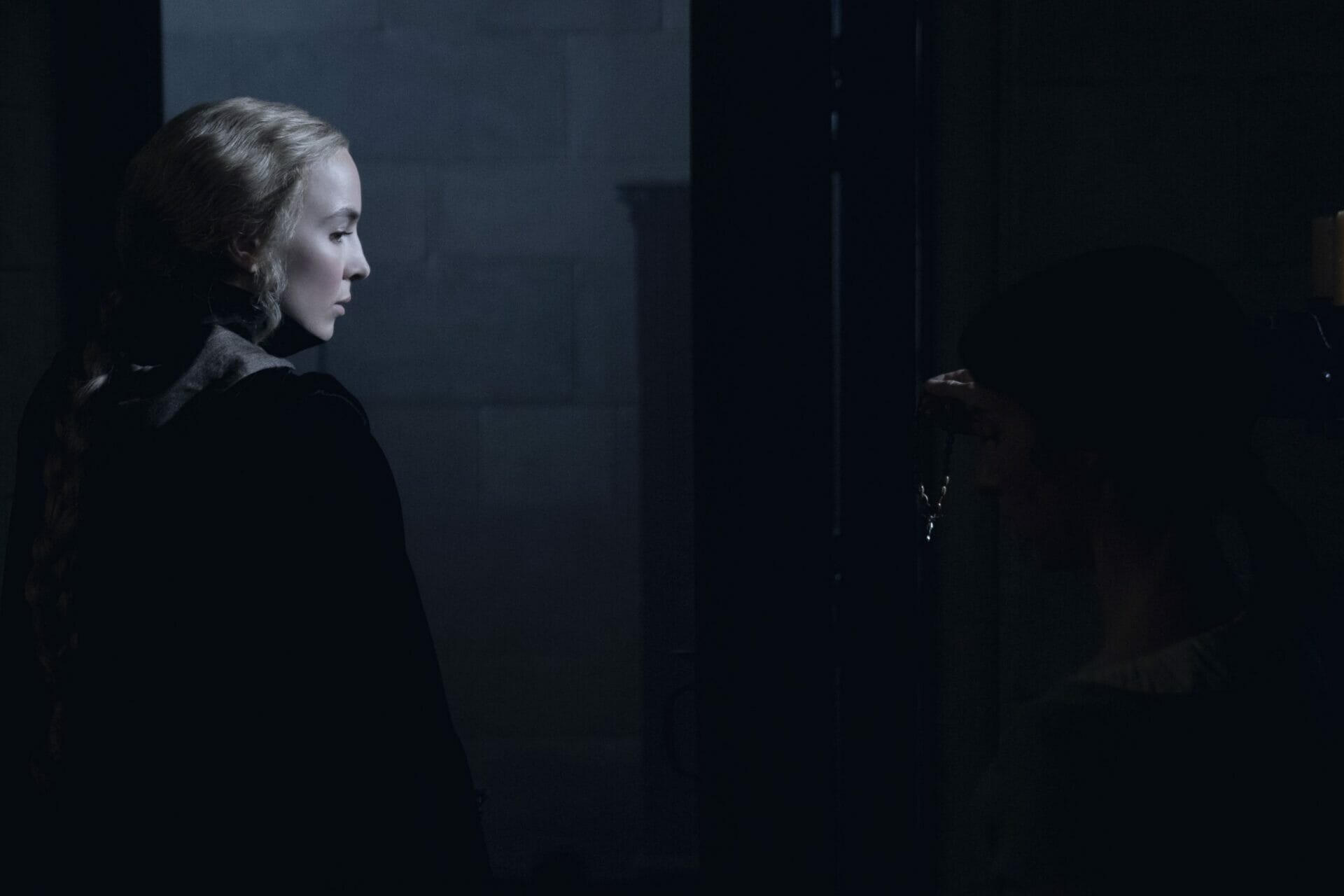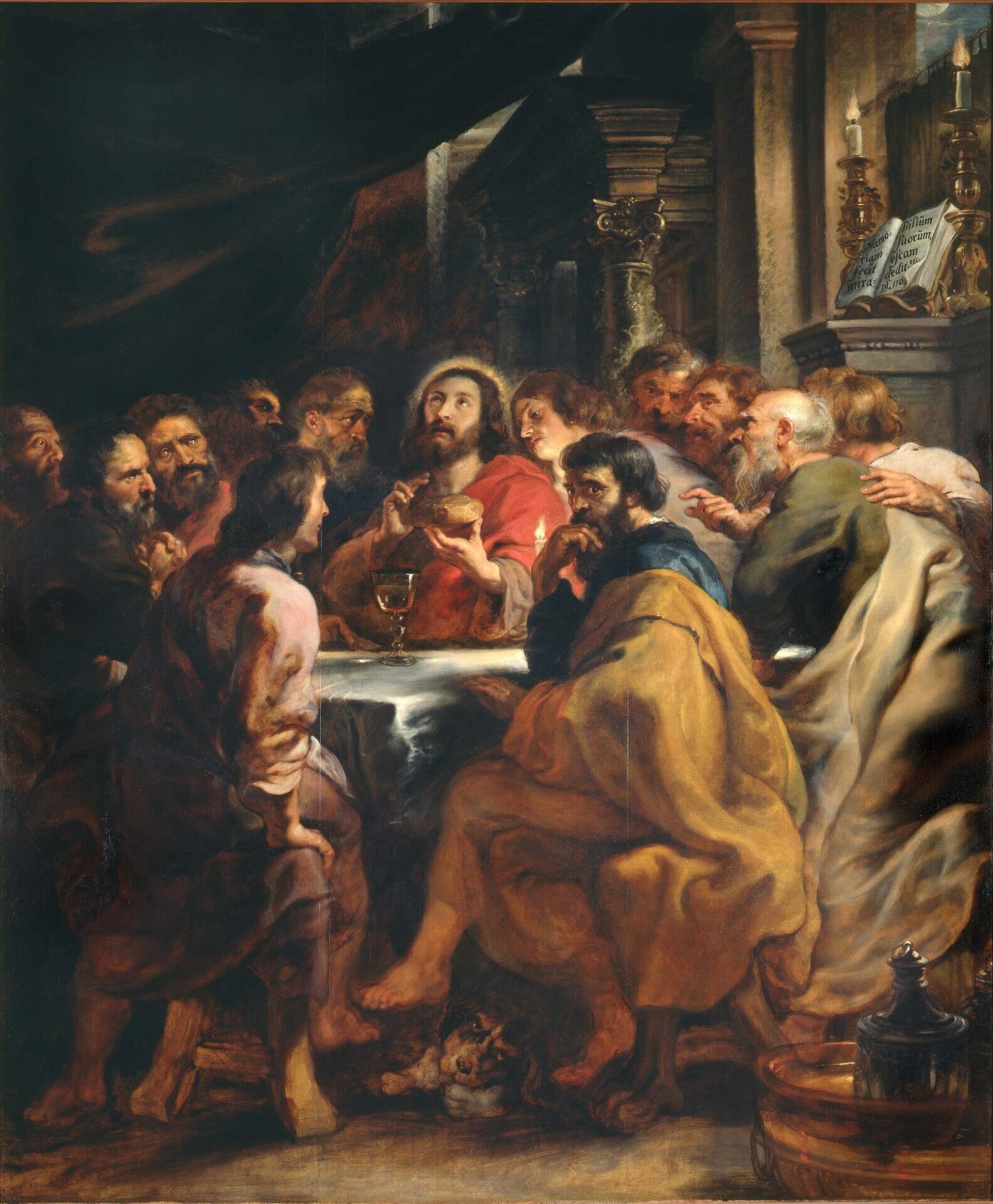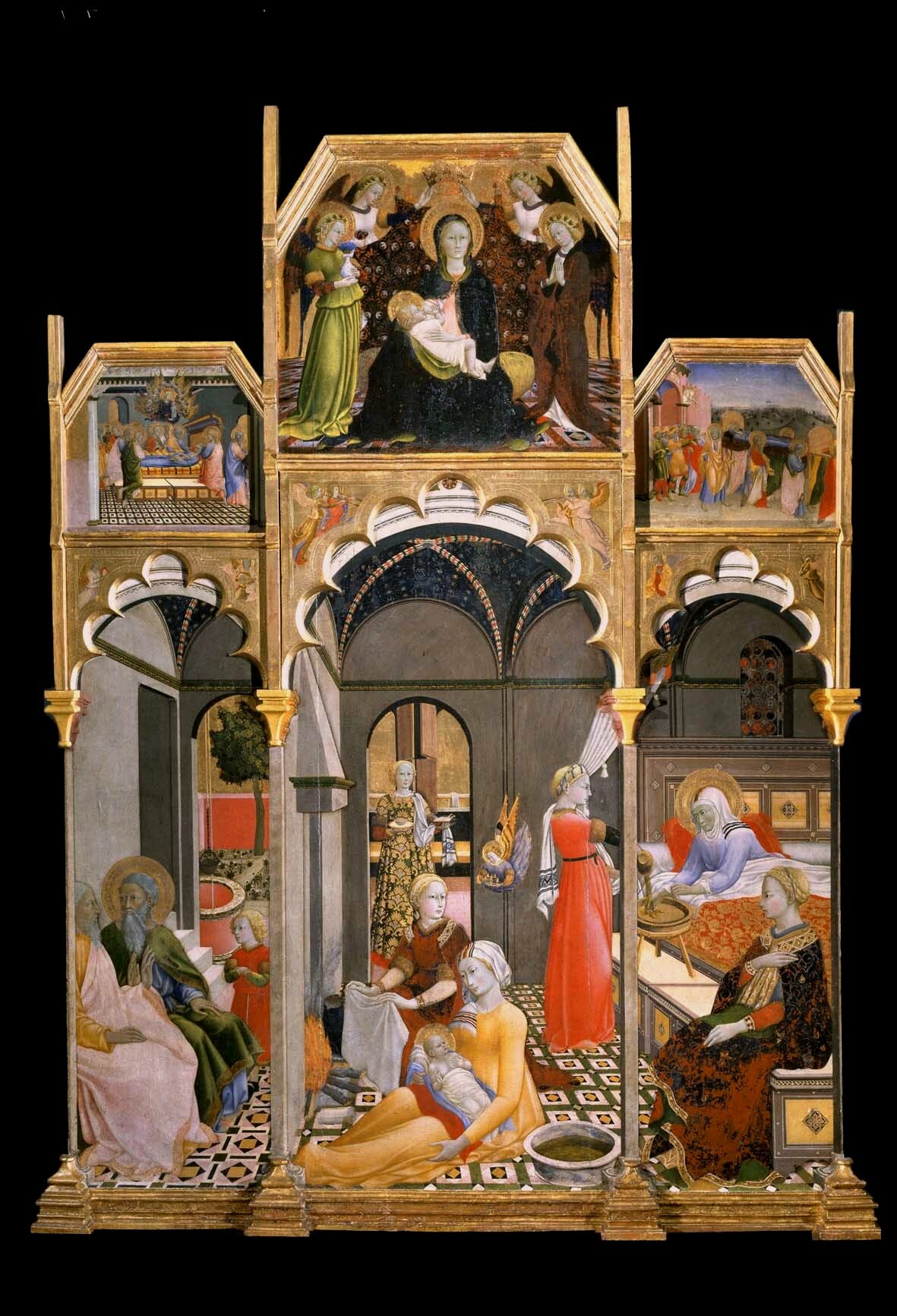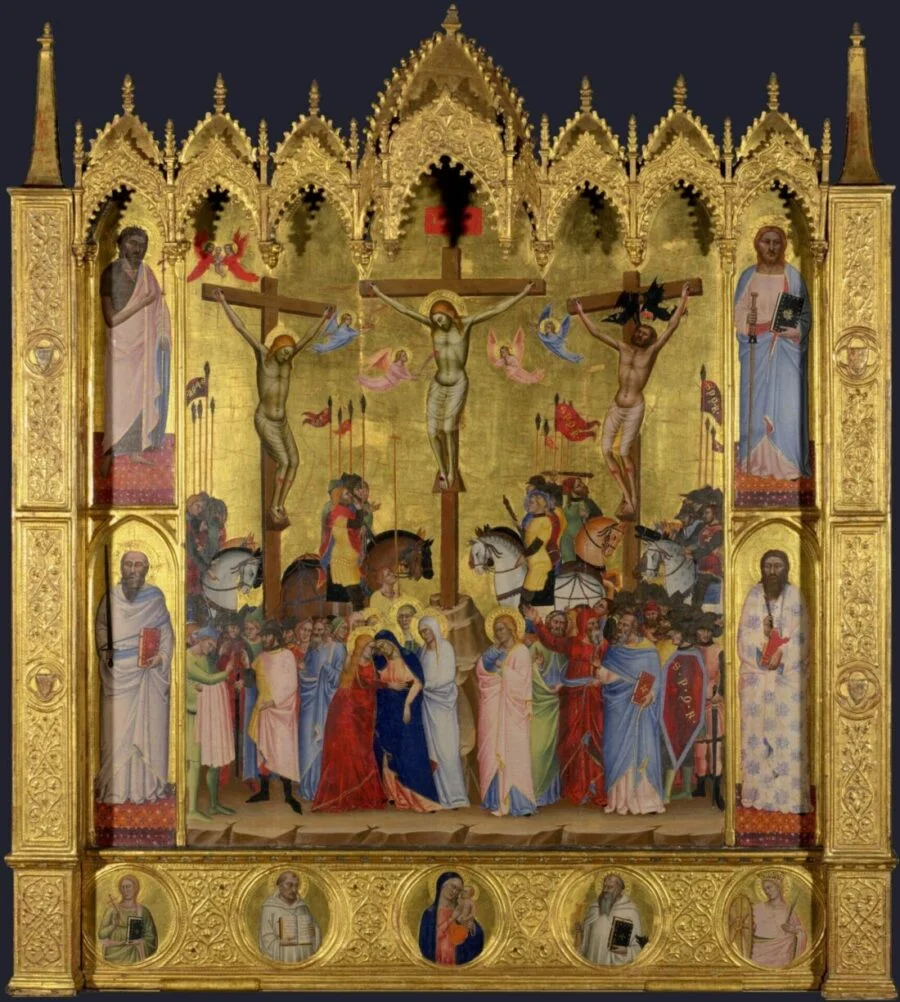
The Crucifixion by Jacopo di Cione | Adventures of a medieval painting
Artist
Country
Format
Original Exhibition
Material
Dimensions
In the latter half of the 14th century, the masters of much of Florentine art were the Di Cione brothers, Jacopo, Matteo, Nardo and Andrea. The Crucifixion by Jacopo di Cione – also known as Robiccia – and his workshop is a small-sized fixed altarpiece with provenance from Florence, which is currently on display at the National Gallery in London. The artwork dates back to 1369-1370 and it is one of the finest examples of Florentine Gothic art of the late 1300s.
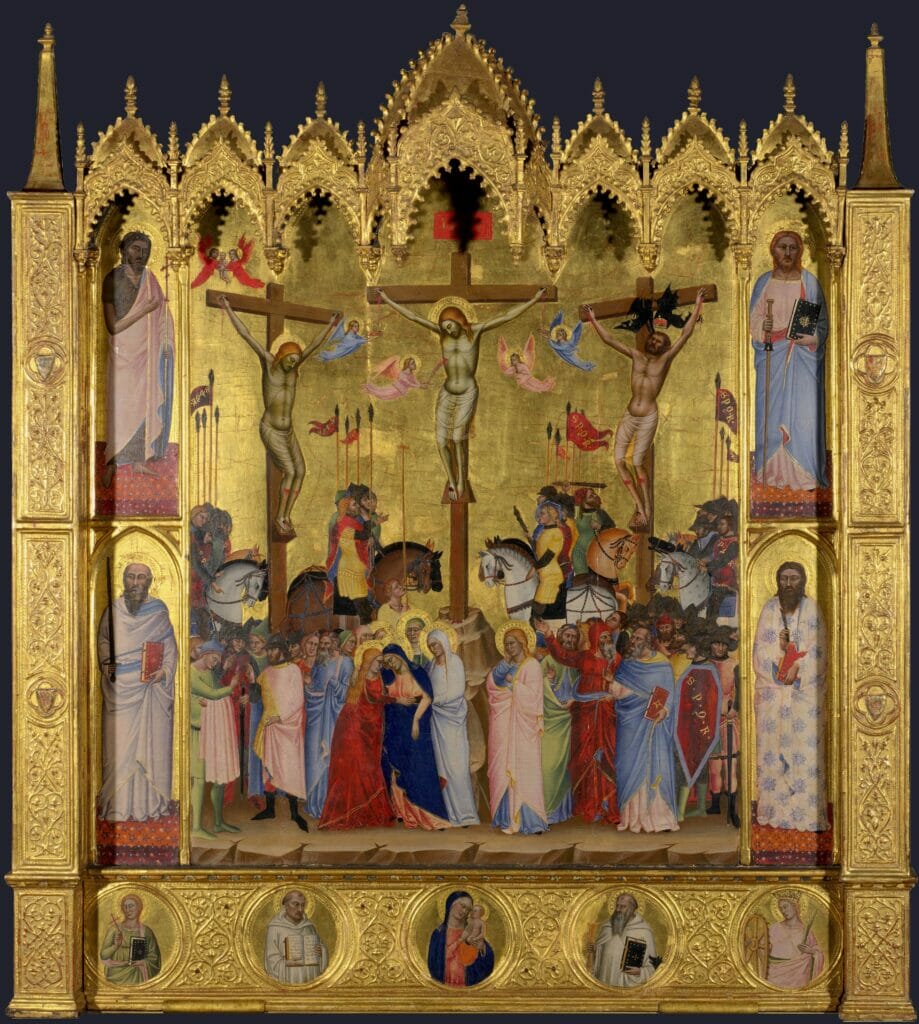
A medieval colourful painting
The artwork presents depicted parts as well as a precious frame, gilded and unique of its kind.
On the central panel, the scene of the Crucifixion is colorful and lively. Its many concurrences lend the panel a strong narrative nature, in contrast with the lateral full-length standing saint figures. On the left-hand side, there is Saint John the Baptist and Saint Paul, while on the right are Saint James the Greater and Saint Bartholomew. The predella, the lower part, in a single wooden panel, presents five figures depicted in five medallions. The central roundel features the Virgin with the Infant Christ. Saint Anthony the Abbot and Saint Catherine appear on the right. On the left Saint Bernard holds an open book along with an unidentified female saint.
A unique frame
The altarpiece also presents a precious Gothic frame, with a bright gilding – unique of its kind – eight coats of arms and seven domes on the top with starred ceilings and a vault cross, a detail that the viewer can only spot if looking at the painting upside down or while on their knees. The original function was contemplative and intimate devotion, and given its small dimensions, all the details visible only when seen from close up.
Provenance: the nunnery hypothesis
There are still gaps in the history of this artwork, but hypotheses and certain facts too. The Crucifixion probably originally belonged to a Florentine nunnery. Perhaps it was the convent of Santa Maria Maddalena di Castello (de’Pazzi), dependent on the Cistercian abbey of Settimo. Given its compact format, presumably, it was originally placed on a small altar. The coats of arms on the two lateral pillars would suggest that the panel protruded out of a niche wall, while the image could have been the object of intimate adoration, more likely placed on altars in the nunnery dormitory. In the 15th century, the decorative program changed as Castello needed to show its power within the town of Florence. At that time, the Crucifixion perhaps was on the altar of Saint Bernard and Saint Benedict, and eventually removed when the nuns moved to San Donato a Torre (around 1442).
The British collections
In a sale by Christie’s auctioneers in 1822 the painting was bought by the owner of Fonthill Abbey in England, until it was acquired by the National Gallery in 1896. Fonthill Abbey in Wiltshire was the extravagant and magnificent mansion of William Beckford (1760-1844) – a famous art collector, writer and politician with a taste in Gothic romanticism. This was definitely the perfect place to hang the Crucifixion. The images that survived show that the artwork would perfectly match the dramatic architecture in the Gothic Revival style of the building and the interiors dominated by gilt and crimson. Indeed, in Rutter’s description of Fonthill Abbey (1822), the Crucifixion was hung in the Lancaster, or State Bedroom showing Beckford’s innovative taste for early Italian pictures.
Function and aesthetic influence
Originally the value of this work was connected to its devotional function and to the precious material features. After Beckford acquired it, its value increased: the original function and the provenance from Italy dignified Beckford’s lineage, while Gothic aesthetics played an influential role within one of the most significant early Gothic revival contexts.
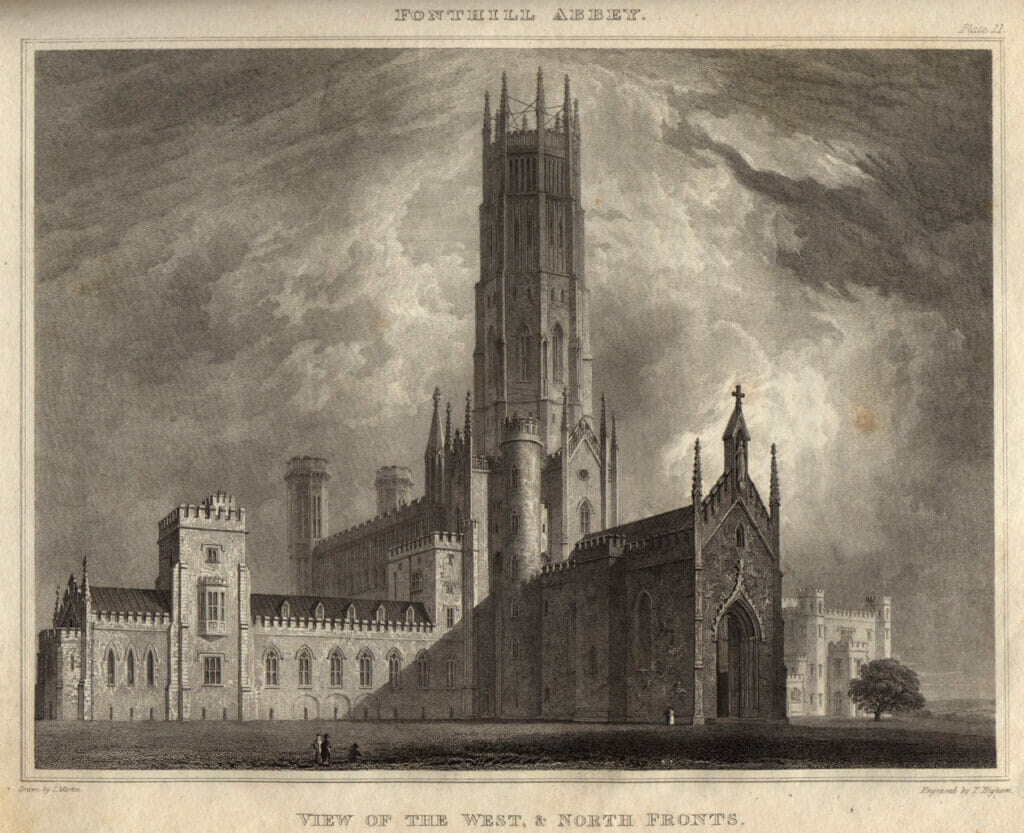
The verticality
In the centre of the scene, Christ is portrayed in all his suffering. The Virgin is fainting at the foot of the Cross with St. John the Evangelist and two groups of people. On the left side are the soldiers casting lots, the sponge-bearer, the group of Marys with Magdalene and the Good Thief. On the right there are the Bad Thief, the soldier who is beating his legs and the spear-bearer. At first sight, the focal point of the painting proves difficult to distinguish. Indeed, the lively interactions create a dramatic scenery, giving the impression of a religious play. Multiple features stress the verticality of this artwork. First of all there are the soldiers’ multiple lances and the poles of the high crosses, then the Virgin with the Infant Christ, who is vertically linked to the desperate Virgin under the Cross.
The sinner look
One of the soldiers on horseback to the right is turning towards the viewer. He directs his gaze outside the picture: a sinner, who now attracts the attention of those standing at this altarpiece, who may be other sinners addressing their prayers to Christ. The most surprising aspect of the whole history of this painting is that such a rare specimen of art has survived until nowadays in excellent condition. Once, it was a point of reference in a nunnery and for sinners who empathized with Christ and prayed to him. Nowadays, the viewer admires it for its beauty and uniqueness at the National Gallery. The beauty and the preciousness of its materials made it a cult object in the 19th century, changing its function. Originally the means to a spiritual purpose, the Crucifixion was reused and revalued more for its aesthetics than for its religious aspects.
Tag
Buy a ☕ for Hypercritic







